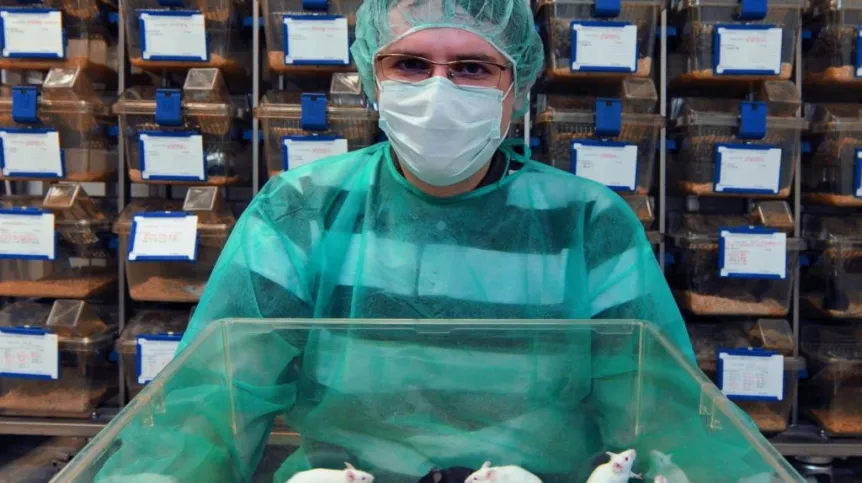
Precisely genetically modified mice, studied at the Nencki Institute in Warsaw, will soon help scientists better understand mechanisms responsible for metabolic disorders, including those leading to obesity.
At the Nencki Institute of Experimental Biology PAS, scientists study mice with a precisely modified genome. With the ability to disable a particular gene - called Dicer - in adult animals, mice can be used to better understand the processes involved in cognitive functions such as learning and memory. What\'s more, these transgenic mice may be an interesting material for the study of metabolic disorders that result in obesity, report representatives of the Nencki Institute in the release sent to PAP.
"Knowledge about the functions of particular human genes is absolutely fundamental in biology and medicine - said Dr. Witold Konopka, head of the Laboratory of Animal Models at the Nencki Institute. - But how to determine the functions of the gene, if we can not make genetic modifications in humans? The only way is to create a suitable animal, such as adult mice, in which the gene can be turned on or off in order to properly model the disease. It\'s easy to say, much harder to do. Especially when it comes to genes that are really important for every cell."
One of such important genes is a mouse Dicer gene, which Dr. Konopka has been researching for several years. This gene, analog of which is also present in the human genome, has its role in the regulation of other genes and its activity is essential for the proper functioning of the cell. Dicer gene can not be disabled in zygotes, because this will prevent the normal development of embryos. But scientists have developed a method to pharmacologically "cut out" the specific gene from the genome of genetically modified adult mouse.
"I received the first mice in which the Dicer gene could be disabled at any moment a few years ago during a postdoctoral fellowship at the German Cancer Research Center in Heidelberg. Now we also produce them in the Laboratory of Animal Models at our institute. But the creation of the animals is only part of the work. If we want to use mice to conduct research, the animals must be properly characterized" - noted Dr. Konopka.
Scientists have to thoroughly examine the characteristics of mice with disabled Dicer. Without that knowledge, they would not be able to determine in subsequent experiments, whether the change observed in the appearance or behaviour of the animal is related to the exclusion of the gene. "Two years ago, we characterized the cognitive processes of new mice. We determined that animals with disabled Dicer gene had better memory than the control group" - said Dr. Konopka. Approximately 5 months after removal of Dicer gene from the brain, cognitive abilities dropped below the control group level. This could be related to the death of neurons that had been pharmacologically deprived of Dicer gene - the researchers believe.
Scientists have also completed the analysis of changes in the metabolic processes of the new mice more they eat and gain weight quickly for 3-4 weeks after switching off the Dicer gene, and then their appetite returns to normal, but increased body weight persists.
"Until now, we have known with reasonable accuracy how our mice learn and remember. Now we are certain that the same mice can also be used for obesity research" - said Dr. Konopka and added that such research would soon be launched.
Studies on the Dicer gene and its influence on cognitive processes and metabolism are now carried out at the Nencki Institute Laboratory of Animal Models, new environmental laboratory, which is part of the emerging Neurobiology Centre. "The new laboratory will not carry out research into the modelled diseases. We also want to produce transgenic animals for other research centres" - announced Dr. Konopka.
The construction of the Neurobiology Centre is being carried out implemented on Ochota Campus in Warsaw as part of a major project of the European Centre for Preclinical Research and Technology CePT. The project, funded by the Operational Programme "Innovative Economy", involves 10 research institutions in Warsaw.
PAP - Science and Scholarship in Poland
lt/ agt/ mrt/
tr. RL













